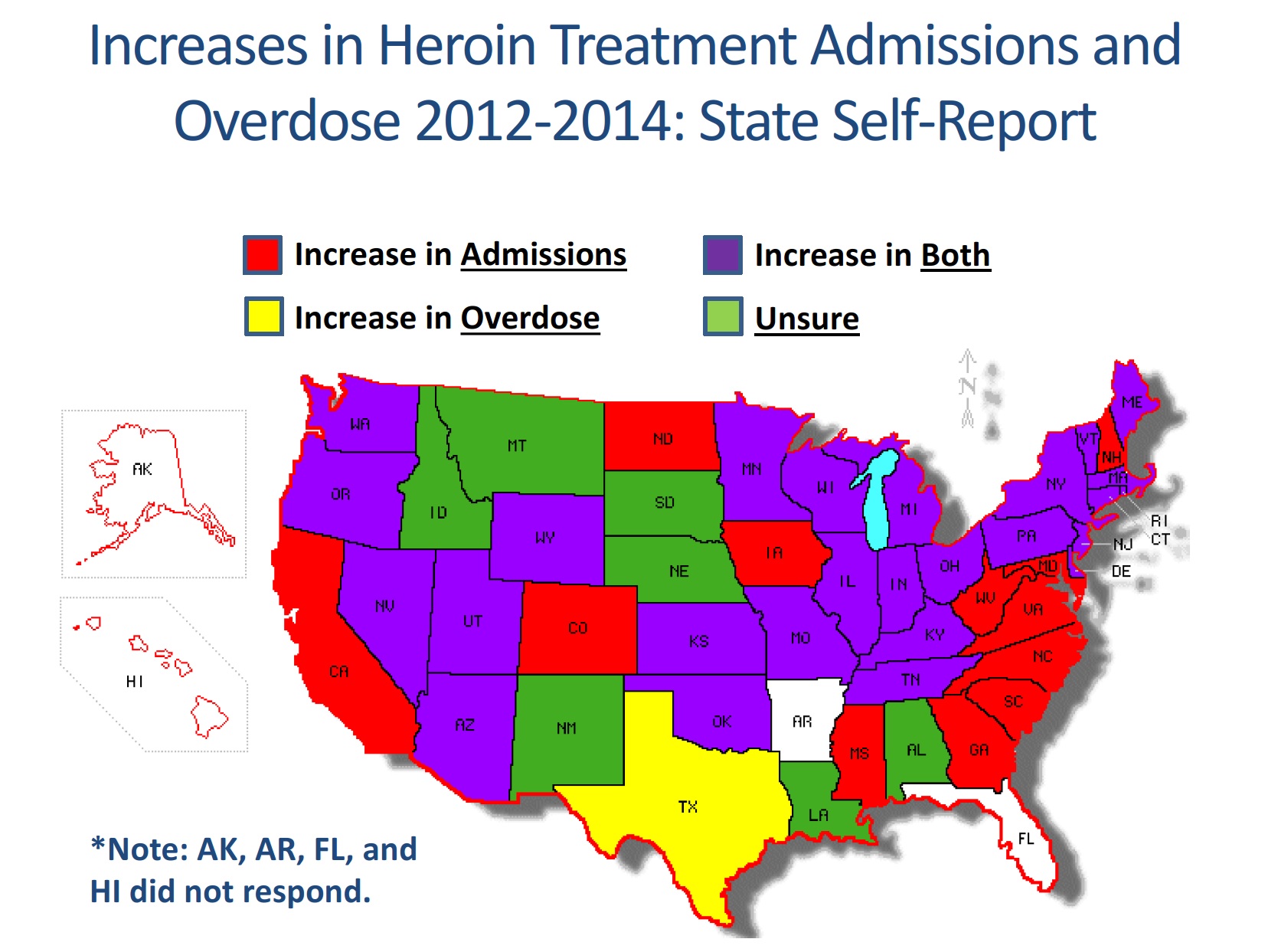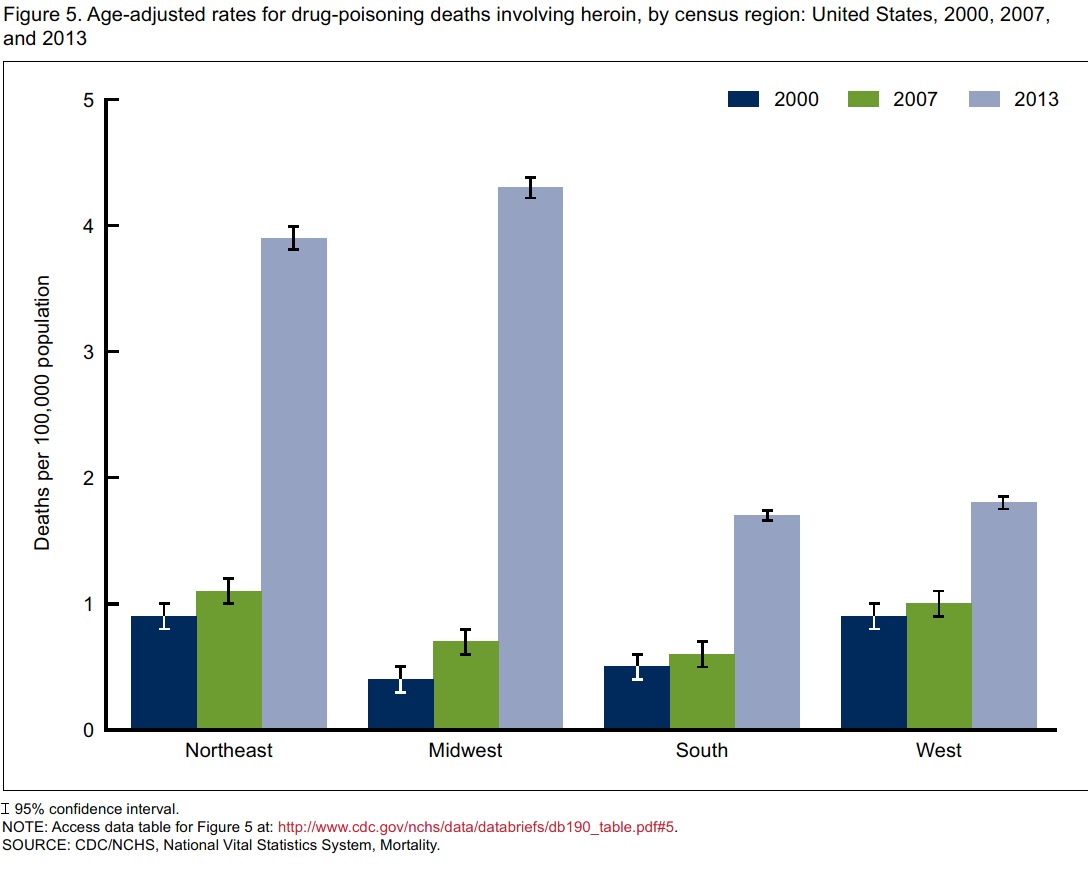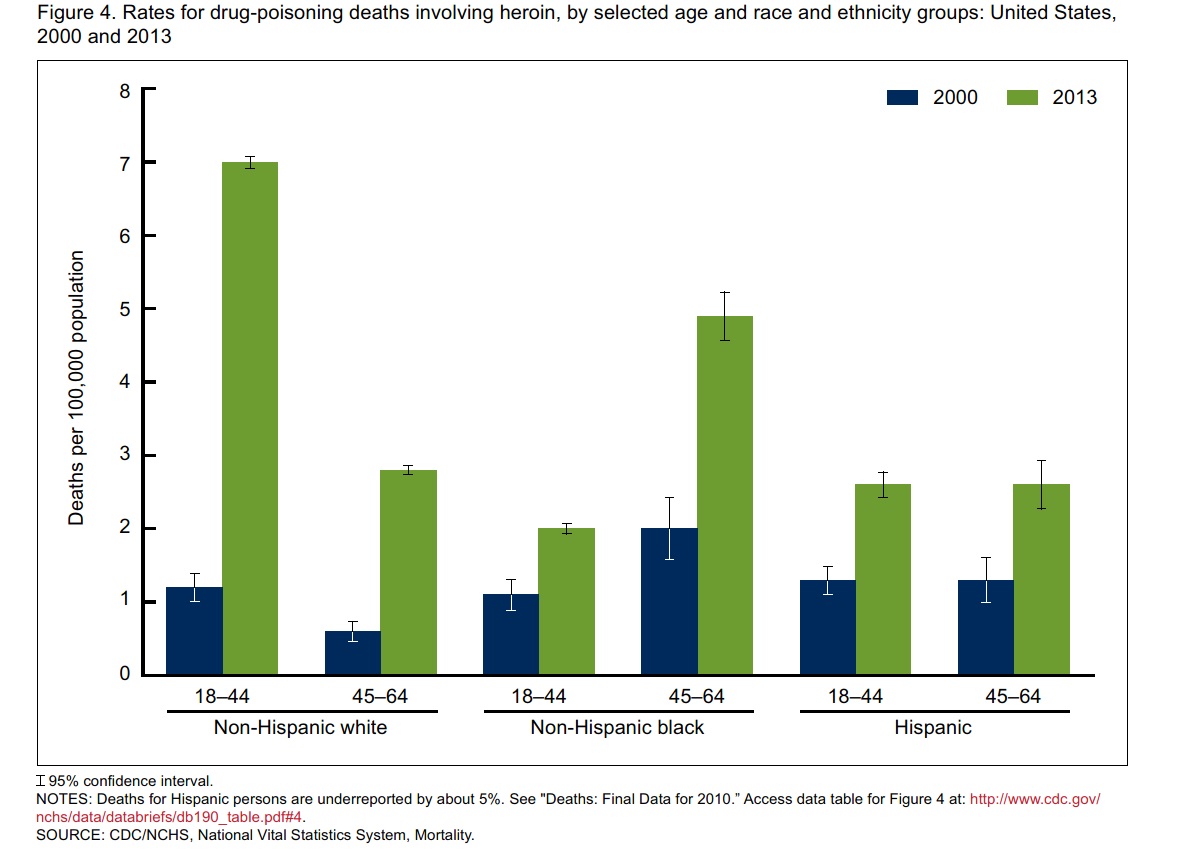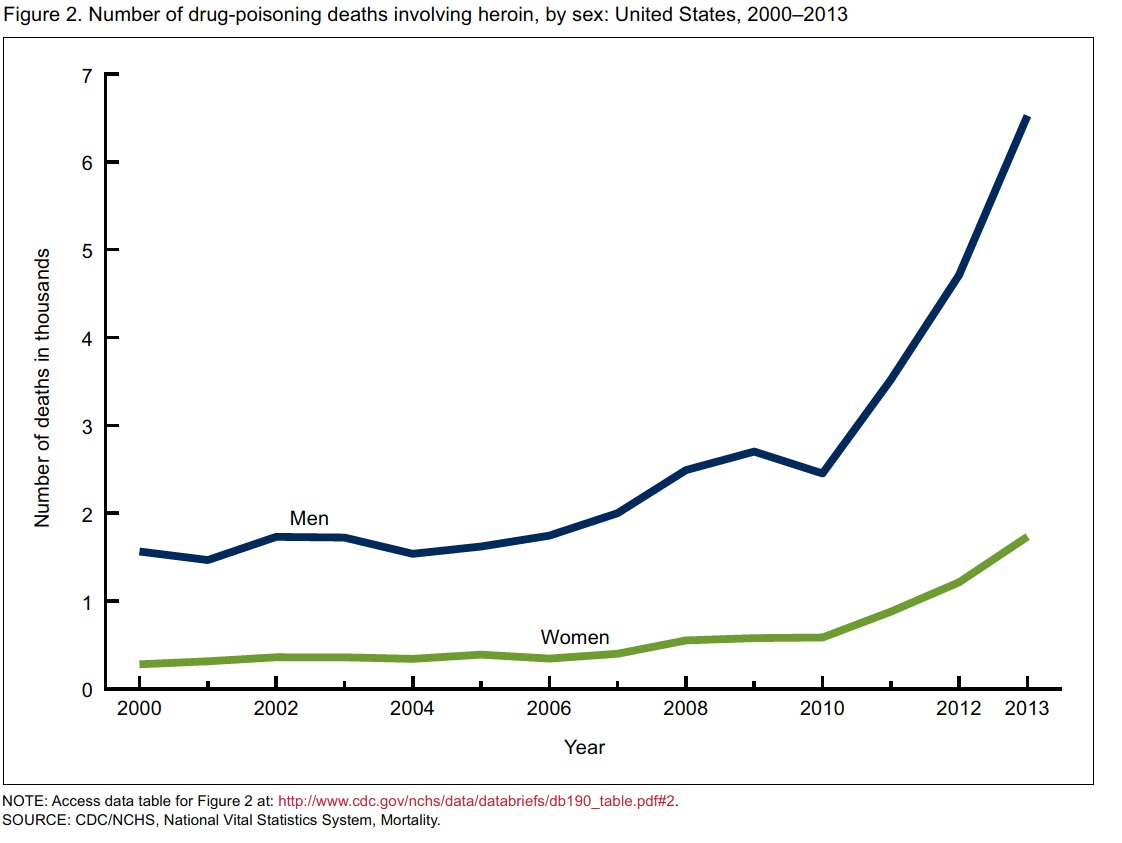Opioid Overdose Mortality Data
 |
CDC Heroin Overdose Data by Age, Sex, Geographic Region - 2000 - 2013See 2013 - 2014 Data (New Dec 18, 2015) |
|
|
Drug poisoning (overdose) is the number one cause of injury-related death in the United States, with 43,982 deaths occurring in 2013 (1). While much attention has been given to deaths involving opioid analgesics (2), in recent years there has been a steady increase in the number of drug-poisoning deaths involving heroin. A recent study using data from 28 states reported that the death rate for heroin overdose doubled from 2010 through 2012 (3). Using data from the National Vital Statistics System, this data brief provides a description of trends and demographics for heroin-related drug-poisoning deaths in the United States from 2000 through 2013. The latest national statistics on drug overdose deaths involving heroin, highlighting the substantial increase in death rates and the populations most at risk. From 2000 through 2013, the age-adjusted rate for drug-poisoning deaths involving heroin nearly quadrupled from 0.7 per 100,000 in 2000 to 2.7 per 100,000 in 2013. During this 14-year period, the age-adjusted rate showed an average increase of 6% per year from 2000 through 2010, followed by a larger average increase of 37% per year from 2010 through 2013 This report provides the latest national statistics on drug overdose deaths involving heroin, highlighting the substantial increase in death rates and the populations most at risk. From 2000 through 2013, the age-adjusted rate for drug-poisoning deaths involving heroin nearly quadrupled from 0.7 per 100,000 in 2000 to 2.7 per 100,000 in 2013. During this 14-year period, the age-adjusted rate showed an average increase of 6% per year from 2000 through 2010, followed by a larger average increase of 37% per year from 2010 through 2013. Identifying populations at high risk of heroin-related drug-poisoning death can help target prevention strategies. The number of heroin-related drug-poisoning deaths among men was nearly four times higher than among women. Since 2000, the rates for drug-poisoning death involving heroin have increased for all age and race and ethnicity groups, with adults aged 25–44 having the highest rate. Heroin-related drug-poisoning deaths increased for all regions of the country from 2000 through 2013, with the greatest increase seen in the Midwest. |
SOURCE: CDC/NCHS, National Vital Statistics System, Mortality.













